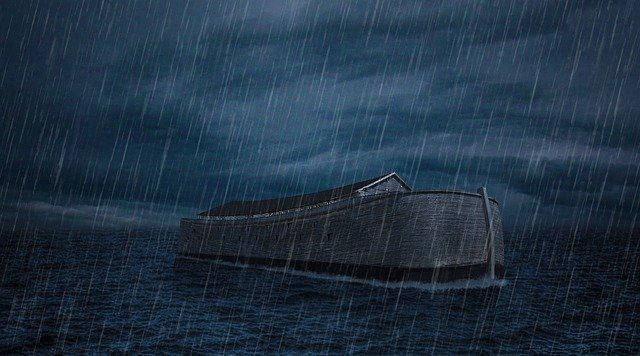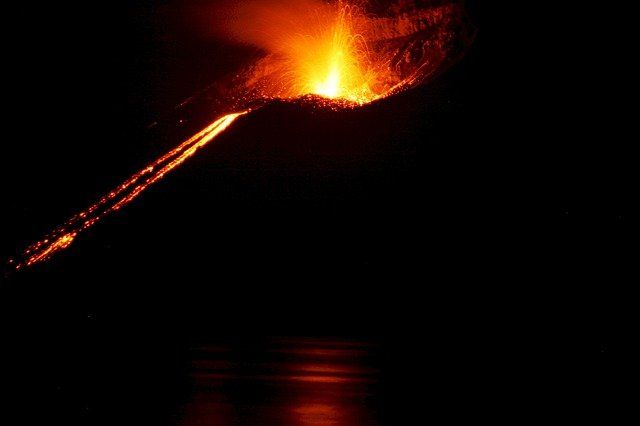
‘I am fairly at a loss to comprehend how anyone for a moment can doubt that Christian theology must stand or fall with the historical trustworthiness of the Jewish Scriptures. The very conception of the Messiah, or Christ, is inextricably interwoven with Jewish history; the identification of Jesus of Nazareth with that Messiah rests upon the interpretation of the passages of the Hebrew Scriptures which have no evidential value unless they possess the historical character assigned to them.’
Though a convinced atheist, Huxley was clear-cut in his thinking on this issue. He knew that the influence of Christianity would wane if doubt could be cast on the truthfulness of the first book of the Bible. He knew that, in time, all the major doctrines of Christianity would have to be abandoned if it once compromised its position on Genesis. Once creation, the Fall and the Flood are called into question as history, then the statements of both the apostles and of the Lord Jesus Christ himself are brought into disrepute, for they constantly appealed to Genesis as a record of historical fact. The whole meaning of sin and redemption is blurred if we lose the anchor of Genesis.

The global flood
Christ regarded the Flood, and the events surrounding it, as historical. He referred directly both to Noah and the Flood (Matthew 24:37-39; Luke 17:26-27). Peter, in both his epistles, refers to Noah historically (1 Peter 3:20; 2 Peter 2:5). In the latter reference it is clear that Peter regarded the Flood as a major catastrophe in history, not so far removed from his own time. He describes it as an event that destroyed the ‘ancient world’ and the ‘world of the ungodly’. Furthermore, the following chapter leaves no room for ‘local flood’ theories, namely the idea that the Flood was just a localized phenomenon. ‘The world that then existed perished,’ declares the apostle, ‘being flooded with water’ (2 Peter 3:4-6).
Peter goes on to assert that the same word from God which brought the Flood upon the earth has ‘reserved’ the world for final judgement. If the latter is worldwide (and of this there can be no doubt) then so must be the former. Let us be clear. The New Testament asserts that Noah was a historical figure and that the Flood was a worldwide historical event.
The evidence in the rocks

What would one expect if there had been a worldwide flood, as the Bible states? Would one not expect to find a planet covered to a great extent by water, with deep layers of sedimentary rock formations, and dead creatures buried across the globe? The discovery of mass graves of fish and animals across the world, often at elevated locations, provides strong evidence for a worldwide flood. It offers a more convincing explanation for the origin of the 70% of sedimentary rock that covers the world’s surface, than can be provided by gradual evolutionary processes. These processes would be too slow to preserve any but the smallest creatures as fossils, since fossilization can only occur where there is rapid inundation and burial.
Not all rocks are sedimentary, of course. There are also rocks formed directly from the molten state. Scientists refer to the ‘ring of fire’ of volcanoes and earthquake zones that mark the Pacific rim, running down the west coast of the USA, the Andes in South America, the islands of Indonesia and up through south-east Asia, Japan and north-east Russia. This has led some creation/flood scientists to speculate that the Flood was due to an impact with a large asteroid which catastrophically broke through the Earth’s mantle (possibly in the Pacific which would explain its great depth). The impact, they suggest, also tilted the Earth’s axis of spin, causing earthquakes and volcanic eruptions of cataclysmic proportions.

Whatever the mechanism used by the Lord to bring about the Flood, not only did rain fall from above, but water originally beneath the earth was also released (Genesis 7:11), possibly creating tidal waves of immense depth which swept across the globe. This would readily explain the massive layers of hardened sedimentary rock and debris scattered across the globe, and the millions of dead creatures buried in the rock strata. There is nothing found in the rock layers which is inconsistent with such a scenario. In fact, much that is found can only be attributed to a catastrophic cause. One example is the occurrence of ‘polystrate’ trees, which are fossil tree-trunks running vertically through a number of rock layers. Evolutionists would have us believe that such layers were deposited over millions of years, but these tree-trunks must have been buried very rapidly if they were to avoid decay. Anyone with an open mind has to admit that the historicity of the Flood is not as far-fetched as the media would have us believe.

The age of the earth
Many professing Bible-believers join with unbelievers in dismissing the straightforward historical view of Genesis, on the basis of the so-called certainties of scientific dating methods. What should be our attitude?
Firstly, of course, Scripture should always come first, not man-made scientific theories. Secondly, however, the dating schemes that appear to militate against a young creation are, in fact, based on unproved assumptions. Because we are heavily indoctrinated by the repeated assertions that the rocks of the earth’s crust are all extremely old, there is little awareness of the actual experimental evidence. To give just two examples, few people realize that (a) hardened stratified rock layers can be formed very quickly, an effect exemplified in the Toatle Canyon below Mount St Helens following the volcanic eruption of 1980; (b) there is experimental laboratory evidence that coal can be formed in a short time if there is rapid heating. The sacred records of Scripture are a very accurate testimony, and humble minds should never put them aside lightly when they have been tried and tested for centuries. To the unbiased mind, the old records are corroborated, not disproved, by the physical evidence. It is foolish and arrogant to assume that truth was never known in the past.
The great catastrophe
For the Bible-believing Christian, modern history dates back to the Flood which took place in about 2400 B.C. To the average person this may seem incredible, but as Byron C. Nelson has pointed out, there are too many early accounts of Noah and the Flood (over twenty from all parts of the world) for them to be discounted. Documentary evidence of an ancient flood is found in accounts from all over the world, from Russia to Mexico, from Greece to Hawaii. Can it be mere coincidence that all written records go back to the Sumerians, and to the region of the Middle East, about 4-5000 years ago? The records are consistent with the Bible’s portrayal of history and the dispersion after Babel. The evidence points to mankind after Noah coming from the Middle East, with Japheth giving rise to the European races; Shem forming the nations of the East (including the oldest known unconquered civilization, China); and Ham being the father of the peoples of Africa.

Responsible to God
We should have a far greater reverence for the written Word of God as history. Scripture is neither a historical text nor a scientific handbook. But whenever its mode of writing demands that it be understood as sober history, we should respect it as such. Where the Lord touches on such matters in his Word, he is true and does not contradict himself. Both history and science must follow the perfect revelation of Scripture, and not come before it. Otherwise we shall be led astray. The Scriptures teach a literal six-day creation which took place some six thousand years ago, with a flood covering the whole world occurring about 1600 years later. The Lord taught very clearly that the Flood, and the disaster that befell Sodom, were real events, which forewarn us of the final judgement yet to come (Luke 17:26-30). Belief in a historical worldwide flood is thus linked to belief in the second coming of Christ and is an urgent reminder that we must all appear before his judgement seat (2 Corinthians 5:10).
The biblical teaching of a flood around 4400 years ago concertinas the huge time-spans proposed by evolutionary theory and ardently promoted by the media. Suddenly, when we look at matters from a proper biblical perspective, we realize that Eden and the Fall of Man were not so far in the distant past as many would have us believe. Our responsibility before God is accentuated. It is not more than 100 generations since the Flood and 110 generations since Adam and the Fall. We fell in Adam, we rebelled, we died. In the light of this, the brevity of life here becomes much more apparent. Our responsibility before God is all the greater as we see the day of Christ’s appearing close at hand.




